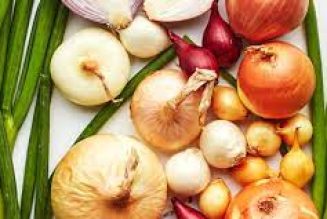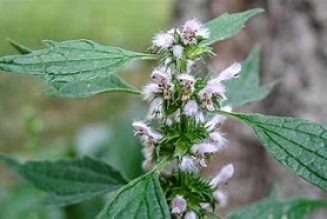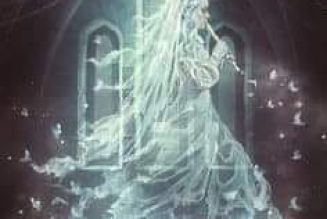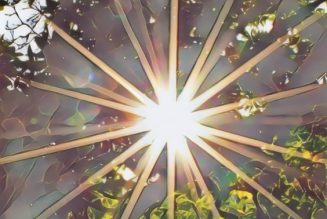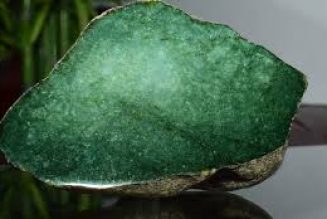
Samhain, (pronounced SOW-in, SAH-vin, or SAM-hayne) means ”End of Summer”, and is the third and final Harvest. The dark winter half of the year commences on this Sabbat. It is generally celebrated on October 31st, but some traditions prefer November 1st. It is one of the two ”spirit-nights” each year, the other being Beltane. It is a magical interval when the mundane laws of time and space are temporarily suspended, and the Thin Veil between the worlds is lifted.
Communicating with ancestors and departed loved ones is easy at this time, for they journey through this world on their way to the Summerlands. It is a time to study the Dark Mysteries and honor the Dark Mother and the Dark Father, symbolized by the Crone and her aged Consort. Originally the ”Feast of the Dead” was celebrated in Celtic countries by leaving food offerings on altars and doorsteps for the ”wandering dead”. Today a lot of practitioners still carry out that tradition.
Single candles were lit and left in a window to help guide the spirits of ancestors and loved ones home. Extra chairs were set to the table and around the hearth for the unseen guest. Apples were buried along roadsides and paths for spirits who were lost or had no descendants to provide for them. Turnips were hollowed out and carved to look like protective spirits, for this was a night of magic and chaos. The Wee Folk became very active, pulling pranks on unsuspecting humans.
Traveling after dark was was not advised. People dressed in white (like ghosts), wore disguises made of straw, or dressed as the opposite gender in order to fool the Nature spirits. This was the time that the cattle and other livestock were slaughtered for eating in the ensuing winter months. Any crops still in the field on Samhain were considered taboo, and left as offerings to the Nature spirits. Bonfires were built, (originally called bone-fires, for after feasting, the bones were thrown in the fire as offerings for healthy and plentiful livestock in the New Year) and stones were marked with peoples names. Then they were thrown into the fire, to be retrieved in the morning. The condition of the retrieved stone foretold of that person’s fortune in the coming year. Hearth fires were also lit from the village bonfire to ensure unity, and the ashes were spread over the harvested fields to protect and bless the land.
Various other names for this Greater Sabbat are Third Harvest, Samana, Day of the Dead, Old Hallowmas (Scottish/Celtic), Vigil of Saman, Shadowfest (Strega), and Samhuinn. Also known as All Hallow’s Eve, (that day actually falls on November 7th), and Martinmas (that is celebrated November 11th), Samhain is now generally considered the Witch’s New Year.
Why do we celebrate Hallows Eve
Hallowe’en – which literally means ‘holy evening’, dates back to the pagan times and is thought to originate with the Celtic pagan festival of Samhain. Samhain was a celebration of the end of the harvest season, meaning ‘summer’s end’.
Gaels in this period are thought to have believed this time of year was also when the walls between the worlds were thin and porous and enabled spirits to pass through. Gaels feared the return of spirits through this thin wall between the worlds because they thought they might damage their crops for the next season.
As a result, to appease any spirits that would creep through, they would set up places at their dinner tables and offer the spirits food and drink. Bonfires would also be lit to scare off evil spirits.
Why do we go trick or treating?
Rear view of three children wearing halloween costumes trick or treating. Credit: Cultura/Getty
Rear view of three children wearing halloween costumes (Picture:Getty)
Trick or treating started in Ireland, Scotland and Wales and involved people dressing up in costumes and knocking on doors asking for food. The groups would offer up poems and songs in exchange for the food.
This trick or treat tradition evolved into children exchanging prayers for the dead in exchange for ‘soul cakes’ in the 11th century in a tradition called ‘souling’. These soul cakes were sweet with a cross on the top and they were intended to represent a spirit being freed from purgatory when eaten.
By the 19th century, this had evolved into a tradition where children would sing songs, tells jokes and read poems instead of prayers for pieces of fruit and money. Later, the children would play threatening pranks on people to get them to hand over sweets.
The name ‘trick or treat’ was first used in America in 1929 after immigrants took traditions surrounding the day overseas.
Why do we carve pumpkins?
This goes back to the Samhain festival when people would decorate their homes to ward off bad spirits. They used to carve turnips and over time this evolved into carving pumpkins. This is believed to be because when Irish immigrants were in America they could only find pumpkins to carve. The pumpkin carving tradition took off properly in the 1920s.
The term ‘Jack O’Lantern’ is believed to have come from the folk story of Stingy Jack who tricked the devil into buying him a drink. Because of this, when he died he wasn’t allowed into heaven or hell but instead was trapped by the devil instead a burning ember, which was kept inside a turnip.
Symbolism of Samhain:
Third Harvest, the Dark Mysteries, Rebirth through Death.
Symbols of Samhain:
Gourds, Apples, Black Cats, Jack-O-Lanterns, Besoms.
Herbs of Samhain:
Mugwort, Allspice, Broom, Catnip, Deadly Nightshade, Mandrake, Oak leaves, Sage and Straw.
Foods of Samhain:
Turnips, Apples, Gourds, Nuts, Mulled Wines, Beef, Pork, Poultry.
Incense of Samhain:
Heliotrope, Mint, Nutmeg.
Colors of Samhain:
Black, Orange, White, Silver, Gold.
Stones of Samhain:
All Black Stones, preferably jet or obsidian.
